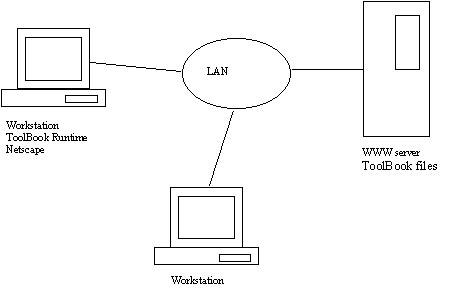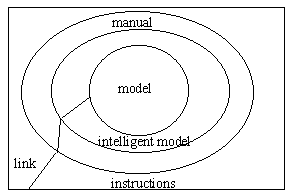
Juha Lindfors, Leena Yliniemi and Kauko Leiviskä
Control Engineering Laboratory
University of Oulu
PL 444
90571 Oulu, Finland
Phone: +358 81 553 2462
Fax: +358 81 553 2466
Email: juha.lindfors@oulu.fi
WWW: http://sun3.oulu.fi/~posaa/jlind.html
The fast development in process technology and automation in recent years has put certain pressure on the personnel of industry. The lifelong learning is one of the most popular words in Finland today. This means that personnel in industry should learn new things while they are working. Until now, learning has often occurred in various kinds of institutes. This is possible only by going off the work. However, there is always people who cannot leave their work or it is difficult. In any case, leaving the work can cause extra costs for the company.
Development of automation has been studied by Bainbridge [2] who found out that automation can reduce the operators' skills and knowledge, because the automation system is taking care of the normal control actions and the operators need to intervene to the control of the process more seldom. Furthermore, the need of additional knowledge and training simulators in pulp industry has been observed as early as 1981 [4] and in an other project conducted in our laboratory, the lack of even the basic knowledge was observed [9]. The better the level of education and the better practical skills the personnel have, the better is their ability to control processes optimally.
The recent development in the fields of hypermedia and networks could make it possible to build such a learning environment that could be installed at the person's working place. In our case this means that the integration of a hypermedia learning environment and a process automation system can be interesting. Until now, process automation systems have been closed, vendor-defined systems. At the present, development progresses towards more open systems where data is transferred through different kind of nets. Openness and nets make it possible to integrate different types of systems together. This means that it is possible to link information into a process automation system using networks or offer tailored courses available on internal nets of companies [7].
This paper presents a solution for building hypermedia based learning environment that includes hypermedia material obtained in earlier projects and hypermedia based simulation. These will be integrated in very special kind of an environment; in a process automation system. The integration gives process operators a possibility to get information for their acute needs. Furthermore, they can study the process through simulations and animations at a quiet time.
The learning environment will be built into the Damatic XD process automation system that exists in the Control Engineering Laboratory. The system is controlling the pilot scale rotary dryer that is used in several research projects.
2.2 The system to be built
In the laboratory there is also a rotary dryer process, by which new methods of the dryer control are studied. For example, such methods
as adaptive and fuzzy controls are available [1,15,16]. The control algorithms are programmed with Matlab and are installed in the HP computer.
The process itself is a pilot scale dryer in the laboratory hall and it is controlled by the Damatic XD system.
A network server will be used to provide the learning. This server includes ToolBook and Matlab material, and a WWW server. Using a workstation, students studying the control of the dryer, can use hypermedia material on the server to support their studies. The rotary dryer simulator is located at the server and it will be connected to the automation system via a database so that the dryer model can update its parameters corresponding to the current dryer parameters in the automation system. The workstation will be a part of a network utilizing the ATM technology [17]. The ATM technology will enable the use of real-time video and sound to and from the workstation. Figure 1 shows the planned ATM network configuration.

The training material developed [10,11] was modularly grouped into series of courses that could be used at different levels of education and in different fields of industry. The basic idea behind the system was that it would be possible to pick a tailor-made module with the main "textbook"-part, examples, problems, demonstrations, and audio visual material for some main topics of process automation.
3.2 The rotary dryer module
The material obtained in COMETT -project includes also a module for learning the basic theory of modelling and control of a rotary dryer.
The behavior of the rotary dryer is simulated with Matlab. Both open-loop and closed-loop simulations are possible. The simulation is started
from the hypertext site, however, the user interfaces are build in Matlab where the process and control parameters can be changed.
Later this module was filled in books concerning fuzzy control, neural networks, and genetic algorithms. Also some simple examples have been included. Asymetrix Multimedia Toolbook 3.0 and its OpenScript language was used for hypertext, simple animations, and simulations. Tables 1 and 2 show the contents of the hypermedia material.
Table 1: Summary of training material of the theory of the rotary dryer [12].
| Books | Includes | Pages |
| Start | Contents | 2 |
| Rotary Dryer | Theory Measurements Control Mathematical model Fuzzy control Simulation | 8 10 9 11 5 4 |
Table 2: Summary of training material of fuzzy control [12].
| Books | Includes | Pages |
| Start | Contents | 2 |
| Fuzzy control | Introduction The Mathematics of Fuzzy Control Fuzzy Controller Expert Systems and Fuzzy Control Introduction to Adaptive Fuzzy Control A Guide to Fuzzy Application Example Bibliography | 41 |
| Neural Networks | Introduction Types of Neural Networks Bibliography | 39 |
| Genetic Algorithms | Introduction A Top-Level View of the Genetic Algorithm The Anatomy of a Genetic Algorithm Concepts Bibliography | 13 |

During simulation the operator is running the model of the process. If the learning is kept in mind, the operator should get right information quickly for the actions he made. The next question is how to provide this information for the operator in the best way? Browsing the right information from a large hyperbase can be boring and if it lasts long, the operator may lose his interest. The answer may be an intelligent browser or an intelligent model that can give, in some way, the right and quick response to the result of the simulation.
On the other, if the process is used instead of the simulator the problem is more difficult. The static linking in the allready built hypermedia material is not proper for a dynamic system. Thus, an intelligent hypermedia system is needed to provide dynamic linking.
One possible solution could be to implement some fuzzy logic to hypermedia, especially to support linking between the event and the information. Mullier presents a dynamic linking system to produce links between nodes [14]. The system connects nodes, which are connected indirectly via semantic structure directly and weights them according to the strenght of the semantic relationship. In addition, a neural network is used to model the way the user is browsing through hypermedia material
. In our case, the dynamic linking has to be done according to the events in the process rather than the user of the domain. Thus, a model of the operator is not needed, but a neural network could be used providing linking between events and reasons.
On the other hand, linguistic equations could be used for dynamic linking. The linguistic equations are often applied to fuzzy-expert systems, where they are providing a flexible environment for combining expertise. The knowledge base of the expert system is represented by linguistic relations that can be changed into matrix equations. The reasoning is based on these equations or on the aggregated sets of linguistic relations obtained by solving the equations. The system is adaptive since the meaning of the linguistic values depends on the working point of the process. This presentation is easily generalized for finer fuzzy partitions and transferred between the programming systems. Membership functions are tuned by simulation experiments or by experiments with real systems [5]. The use of a knowledge base and expert system may be inflexible in our case, but it is believed that during the simulation or running the process, the events could be converted to linguistic equations that can be handled by a dynamic linking system.
Although the ToolBook material is in principal part ready, the integration of these two different operating systems is expected to cause problems. In spite of the ToolBook is running in the local net, launching applications that are pieces of a larger system with system book, etc. can be difficult. The WWW material is more easily available, but can not meet, in this case, all the needs of the operators.
Since hypermedia is often semantic, the fuzzy-linguistic approach with neural networks could be applied to make the dynamic linking system, enabling an intelligent navigation between pieces of information. The project is in the beginning and all the questions are under research. It is not sure if dynamic linking during the simulation could be applied because it may take too much of computing time. Moreover, lack of tools can cause difficulties and can lead, more or less, to use of already existing tools.
[2] Bainbridge L. (1983). Ironies of Automation, Automatica, Vol. 19, No. 6, pp. 775-779,
[3] Dillon A. (1990). Designing the human computer interface to hypermedia applications. In: Artificial Intelligence and Human Learning (D. Jonassen, Ed.). Springer-Verlag.
[4] Jutila E., Leiviskä K. (1981). The use of computer simulation in the pulp and paper industry. In: Mathematics and Computers in simulation, Vol. XXIII, No 1, pp. 1-11.
[5] Juuso E. (1994). Application of Fuzzy Logic and Neural Networks. In: Annual Report of Control Engineering Laboratory 1994 (Leena Yliniemi, Ed). Control Engineering Laboratory, University of Oulu, Oulu , Finland. p. 14.
[6] Kaarela K., Oksanen J. (1994) Operator Support Systems Based on an Information Model. In: Proceedings of the '94 Symposium On Human Interaction With Complex Systems, September 18-20, Greensboro, NC, USA. pp. 156-165.
[7] Lallukka L., Sundström S. (1995) Metallurgical Knowledge System and Quality Management: Hypermedia in Education in Steel Industry. In: Proceedings of Hypermedia in Sheffield '95, July 3-5, Sheffield, UK, pp. 249-256.
[8] Leiviskä K., Yliniemi L., Lindfors J. (1991) Training Materials for Process Automation: Demonstration of Teaching Process Measurements. In: Proceedings of Nordic Conference on Computer Aided Higher Education, August 21-23, Espoo, Finland. pp. 73-77.
[9] Leiviskä K., (1995) Hypermedia in Simulation and Control. Presentation in SiE/WG Workshop, June 29-30. Brussels, Belgium.
[10] Lindfors J., (1993) Training Materials for Process Automation in Hypermedia Environment. Licentiate thesis, University of Oulu. p. 70.
[11] Lindfors J., Leiviskä K., Yliniemi L., Piirainen I. (1994) Experiences of Using and Building a Medium Large Hypermedia Material. In: Proceedings of Hypermedia in Vaasa '94 Conference, June 8 - 11, Vaasa, pp. 270-276.
[12] Lindfors, J. (1996) Integration of Hypermedia Material into a Process Automation System. In: Proceedings of First International ToolBook Virtual Conference '96, January 18. Internet. 4 p.
[13] McAleese J. (1989) Navigation and Browsing in Hypertext. In: Hypertext Theory into Practice; (R. McAleese Ed). Blackwell Scientific.
[14] Mullier D., J. (1995) Using a Neural Network to Model Hypermedia Browsing. In: Proceedings of Hypermedia in Sheffield '95, July 3-5, Sheffield, UK, pp. 115-122.
[15] Yliniemi L., Alaimo L., Koskinen J., Development and Tuning of a fuzzy Controller for a Rotary Dryer. Report A No 1, December 1995. Control Engineering Laboratory, University of Oulu, Finland. 14 p.
[16] Yliniemi L., Koskinen J., Rumpukuivaimen sumea säätö. Report B No 1, December 1995. Control Engineering Laboratory, University of Oulu, Finland. 17. p. (in Finnish).
[17] Yliniemi L., Lindfors J., Leiviskä K. Development and experiences on the teaching of process automation via network. In: Proceedings of the EAEEIE’96 Conference, June 12-14, Oulu, Finland, pp. 255-260
Index